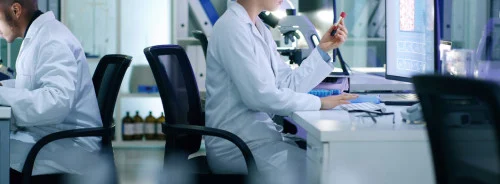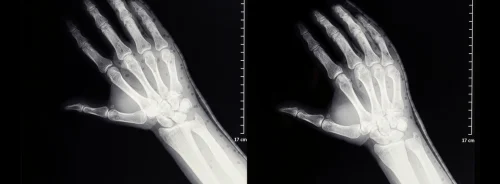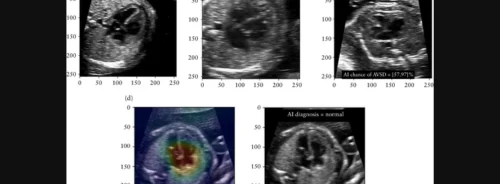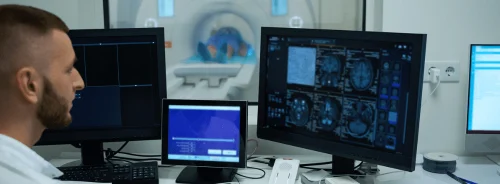HealthManagement, Volume 6 - Issue 5, 2006
Information Technology in a University Radiology Department
Author
Dr Peter Mildenberger
Senior Radiologist
Department of Radiology
Johannes Gutenberg
University Hospital
Mainz, Germany
MILDEN@RADIOLOGIE.KLINIK.UNI-MAINZ.DE
The Johannes Gutenberg University Hospital is a fairly typical example of university hospitals in Germany. It has about 1,500 beds, serving 55,000 inpatients per annum as well as a large number of outpatients.
We provide a wide range of radiology services, dispersed throughout different departments, including General and Interventional Radiology, Neuroradiology, Nuclear Medicine and Paediatric Radiology. For example, in the main department (General and Interventional Radiology), more than 130,000 studies are performed each year, including 23,000 CT studies and 3,000 interventions. A wide variety of different multi-slice CT scanners are available, including a 64-row, 16-row and 4-row scanner in the main department and a 32-row scanner in Neuroradiology.
Current Information System
All departments are linked by one general information system (RIS), which has been in operation since 1988. The RIS (Lorenzo RadCentre, iSoft) is used for patient data (ADT), scheduling, documentation, reporting, analysis and various other tasks. Also, for analysis and benchmarking we have initiated a proprietary small ‘business warehouse’ application. At the present moment, speech recognition is under evaluation and will become part of the reporting process in order to improve turnaround time. We also have an interface for the transmission of patient data, reports or documentation within the administrative system.
Growing Uses for PACS
As one of the earliest users in Germany, our PACS has been operational (including ProVision, Cerner, and Lumigo, ConVis) since 1996. As of 2000, PACS is used as a general image management solution available for all departments of the hospital which acquire digital images, for example, cardiology, endoscopy and microscopy, among others. More than eighty modalities are now connected within the PACS. The amount of new data is about 13TB per year, with ever-growing numbers due to new techniques in CT, MRI and other new image sources. However, about 50% of this data comes from CT alone.
The second most significant image source is ultrasound, particularly with echocardiography, where cine-loops as DICOM multi-frame-objects are part of the study. A hospital-wide image and report distribution system is available, which is very well integrated and heavily in use, with more than 2,500 requests per day.
Open and Scalable PACS
In 1996, we began a new concept for an open and scalable PACS based on the relatively new DICOM standard, inaugurated in 1993/94. At the beginning of our PACS activities, it was very often cumbersome to connect new devices with this new information system, because of limited knowledge by the vendors about interfacing with new DICOM services. Over the years, this issue of integration has been dealt with. Today, connecting a new device is almost easy. ‘Integrating the Health Enterprise’ (IHE) profiles and experience have proven very helpful for users, because of the standardised processes generated by them that have created defined guidelines for interfacing.
In each new request for proposals we initiate, we now ask for specific IHE profiles, even for modalities like CT or MRI as well as for information systems. Today we use IHE profiles for Scheduled Workflow (general workflow), Patient Information Reconciliation (updates between different IT systems), ConsistentTime (for synchronisation of system time in different computers) and Patient Data Interchange (Generating DICOM-CDs). Other profiles like Key Image Note, Enterprise Wide User Authentification or Personal White Pages are under evaluation or in implementation.
Teleradiology Solution
We are currently engaged in developing tools for an independent and open teleradiology solution (www.tele-x-standard.de). This solution connects the different hospitals within the overlying university hospital structure, and is in use for radiological examinations in emergency situations, consultation or follow-up studies. Also, a very new application is the transmission of cardiological studies from the cath lab to our heart surgeons. The technical basics of the solution are encryption and signature, based on PGP (which could also be extended to s/mime), transmission with SSH or DICOM email. This approach has been approved by a national initiative, supported by the Geman Society for Radiology (DRG). Professional support is also available from different companies such as Aviconet. Medical image processing is another important topic, because new CT and MRI studies allow quantification and functional analysis, e.g. tumour measurements, growing factors, heart function and tumour activity. We are active in this area with our own experts and also a member of a related national research group, VICORA (www.vicora.de).
IT in Education
One of our most significant activities focuses on promoting IT in education, not only for students but for physicians, too. Basic training experiences such as implementing a learning platform and building a case collection are becoming more and more important.
Internal Organisation
Because of so many different acitivities in IT, we have our own experts, a group of four people, as part of the staff in the radiology department responsable for RIS, PACS, teleradiology, hardware and so on. This underpins a strong cooperation with the central IT department, which is providing the network or internet access. Radiologic IT staff are also supported by various developers for teleradiology, eLearning or image processing solutions.





